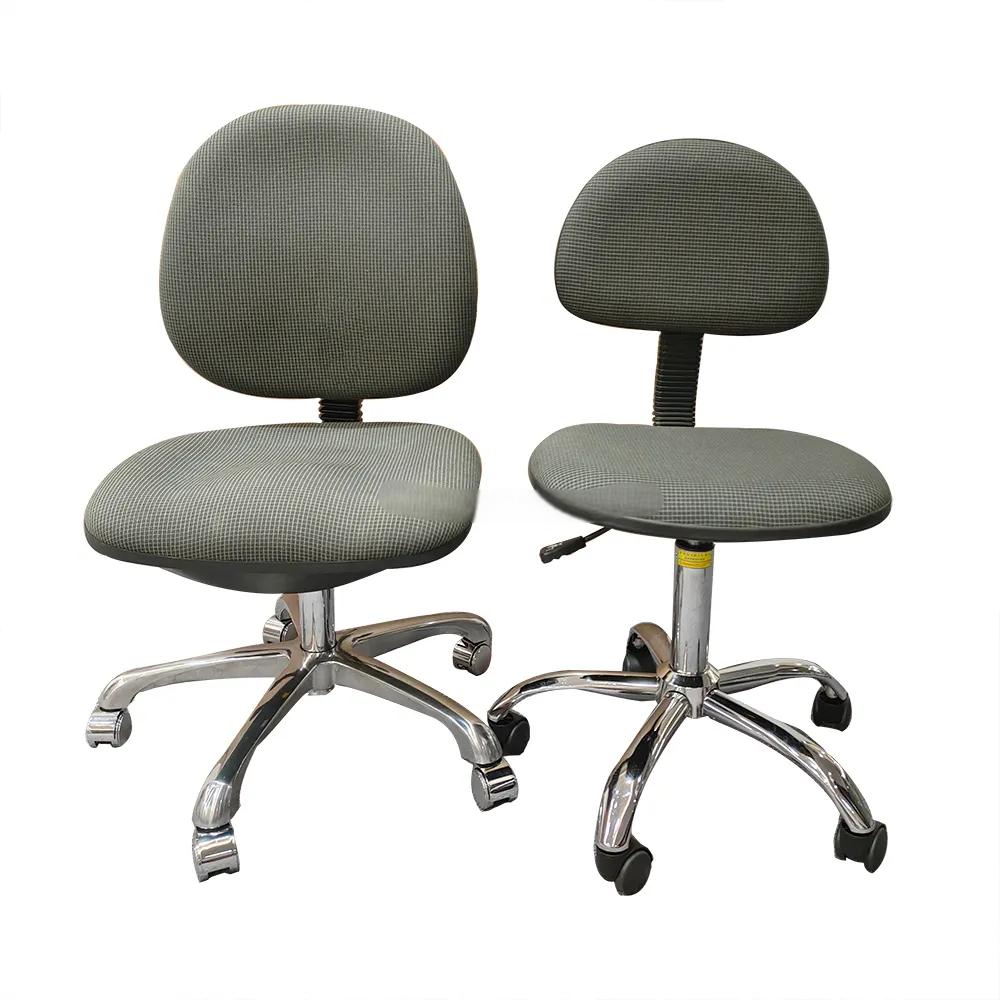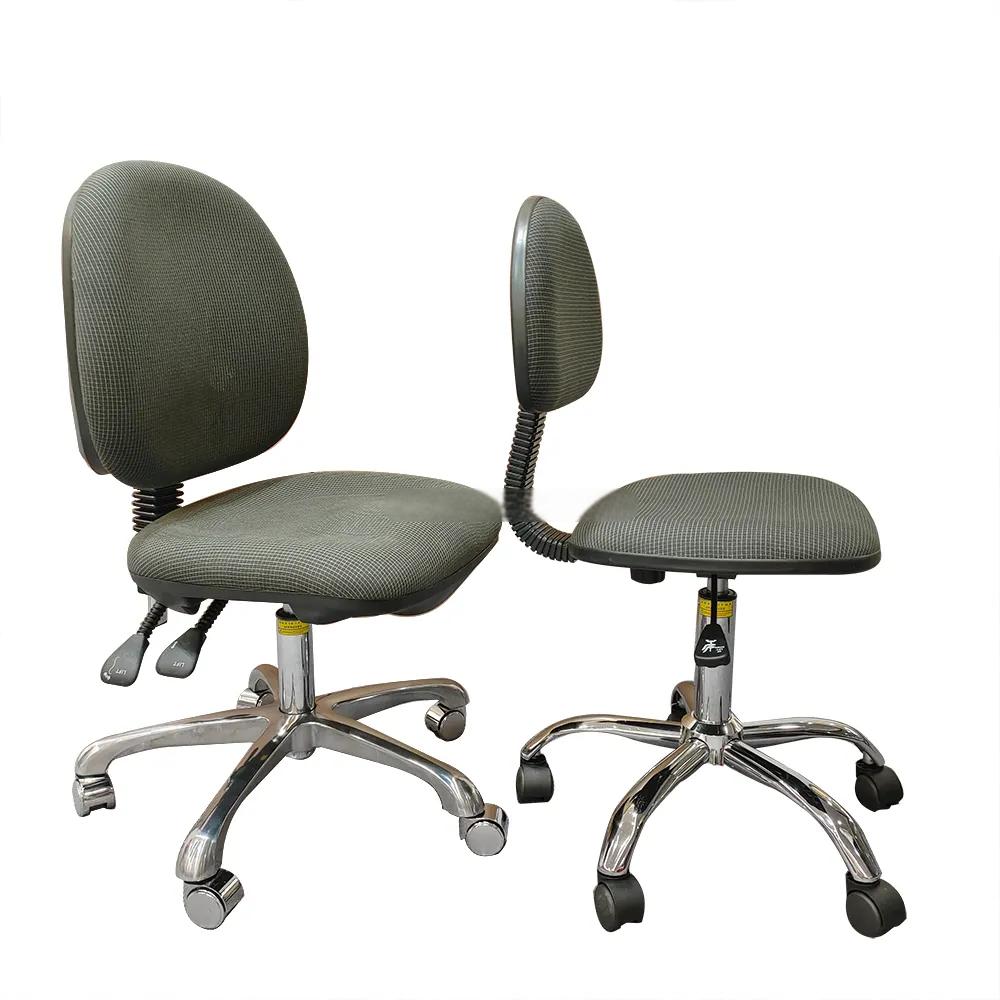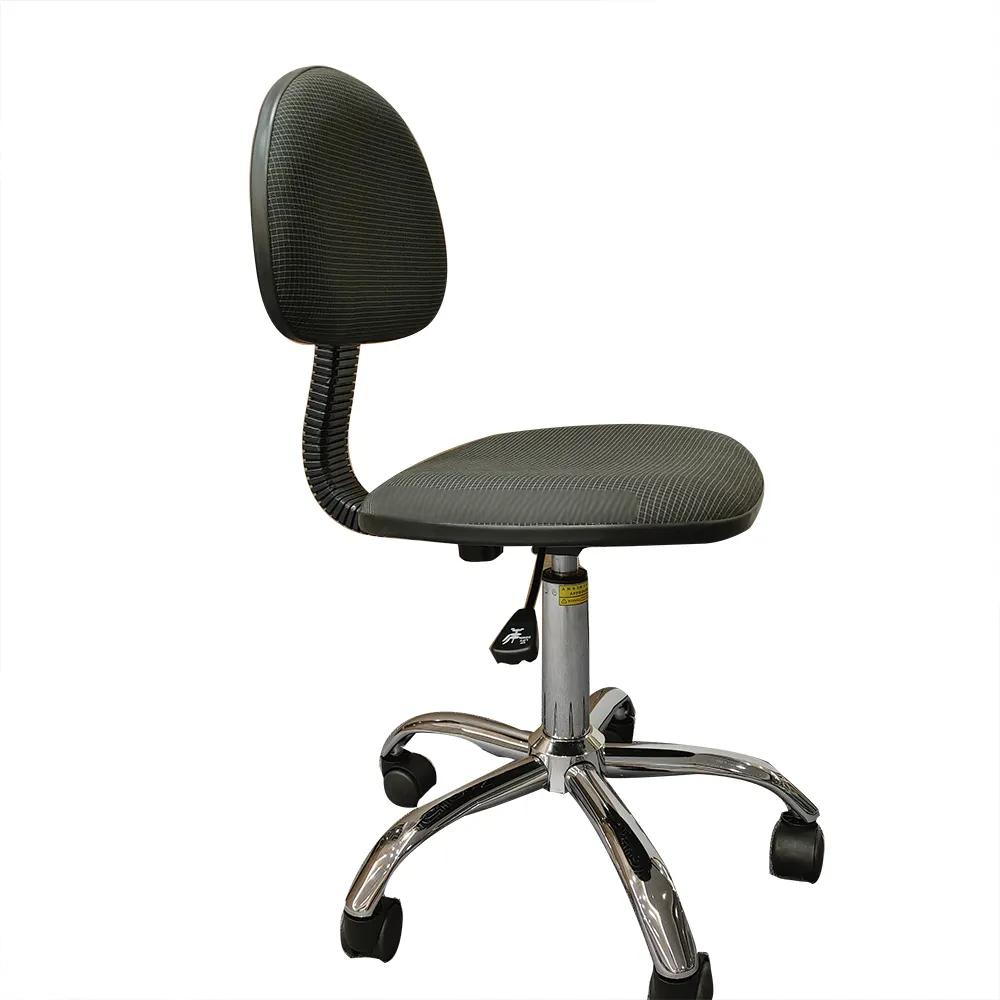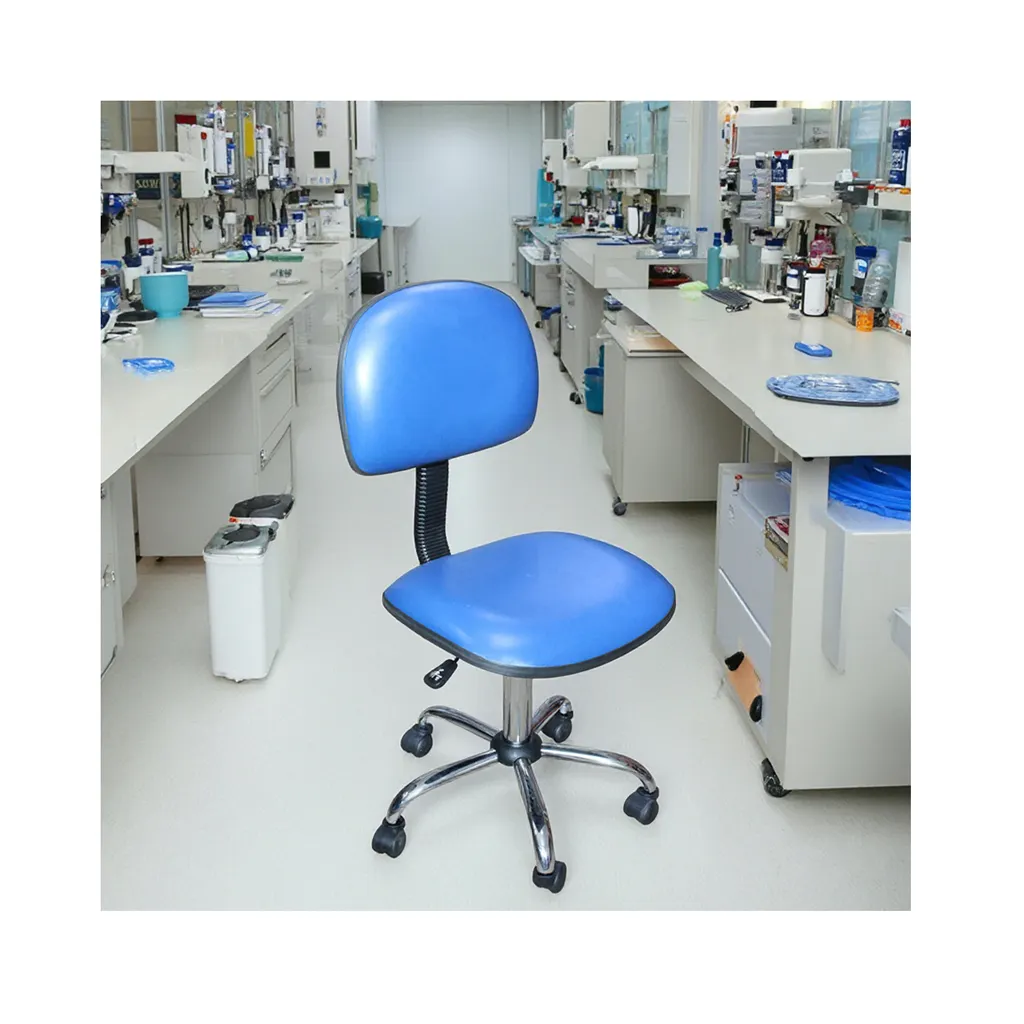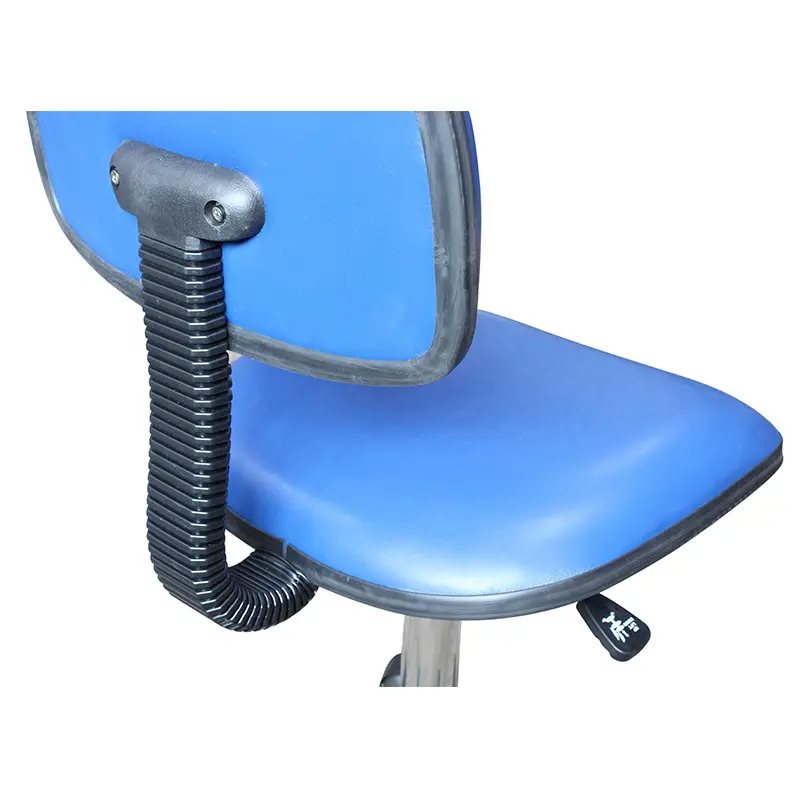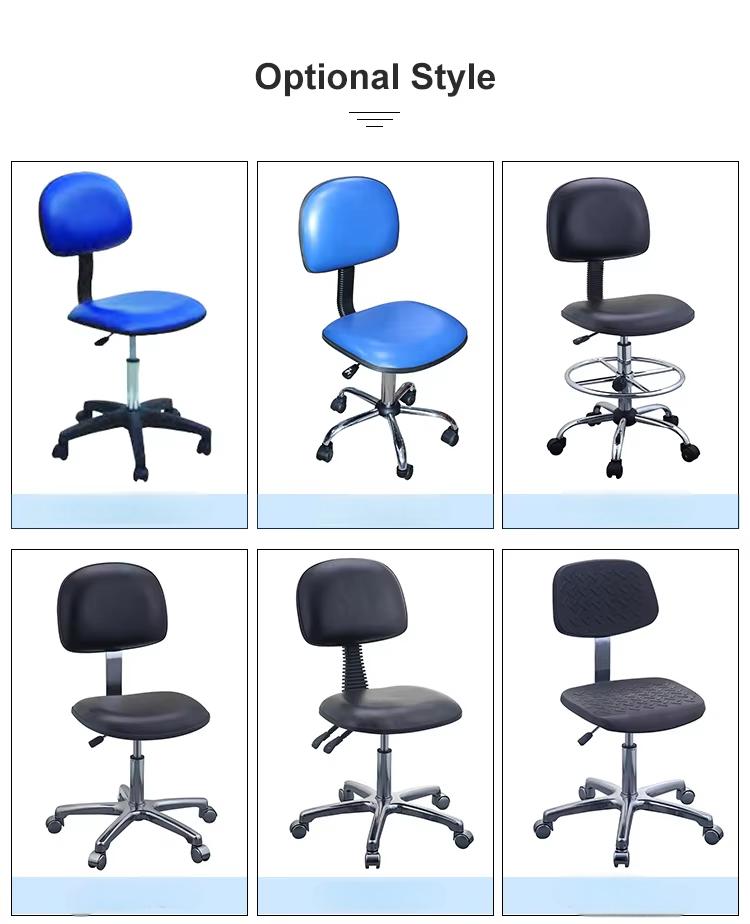When comparing ESD PU Leather Chairs and ESD Fabric Chairs, several factors come into play, including durability, comfort, maintenance, and suitability for ESD (Electrostatic Discharge) environments. Below is a detailed comparison:
Material & Durability
ESD PU Leather Chair:
Made of synthetic polyurethane leather.
Highly durable, resistant to spills, abrasion, and chemicals.
Less prone to wear and tear compared to fabric.
May crack or peel over time with heavy use.
ESD Fabric Chair:
Made of anti-static fabric (often blended with conductive fibers).
Breathable and softer but may wear out faster with heavy use.
More prone to staining and absorbing liquids.
2. Comfort & Ergonomics
ESD PU Leather Chair:
Smooth, non-porous surface—can feel sticky or hot in warm environments.
Less breathable, leading to sweating during long sitting sessions.
Often easier to clean and maintain.
ESD Fabric Chair:
More breathable, providing better airflow and comfort over long hours.
Softer texture, reducing pressure points.
Better for temperature regulation (cooler in summer, warmer in winter).
3. ESD Performance
Both chairs are designed with anti-static properties to prevent electrostatic discharge.
PU Leather: Conducts static electricity efficiently but may generate more friction.
Fabric: Often has woven conductive fibers that dissipate static effectively while being less prone to generating static via friction.
4. Maintenance & Cleaning
ESD PU Leather Chair:
Easy to wipe clean with a damp cloth or disinfectant.
Resistant to spills and stains.
Requires occasional conditioning to prevent cracking.
ESD Fabric Chair:
More challenging to clean—may require vacuuming or specialized cleaners.
Absorbs spills, leading to potential odor or staining.
May need professional cleaning for deep stains.
5. Aesthetics & Professional Look
PU Leather: Sleek, modern, and professional—ideal for labs, cleanrooms, and offices.
Fabric: More casual and cozy—suited for less formal ESD environments.
6. Cost
PU Leather Chairs: Generally more affordable than high-quality ESD fabric chairs.
Fabric Chairs: Can be more expensive, especially with premium anti-static fabrics.
Which One Should You Choose?
Choose ESD PU Leather If:
You need easy maintenance and spill resistance.
You work in labs, manufacturing, or cleanrooms.
You prefer a sleek, professional look.
Choose ESD Fabric If:
Comfort and breathability are priorities (e.g., long work hours).
You work in less harsh environments (e.g., offices with ESD requirements).
You prefer a softer, more ergonomic seating experience.
Final Verdict
Durability & Cleanability → ESD PU Leather wins.
Comfort & Breathability → ESD Fabric wins.
ESD Performance → Both are effective, but fabric may generate less friction-related static.
Your choice depends on the work environment, comfort needs, and maintenance preferences. Let me know if you need recommendations for specific models!
